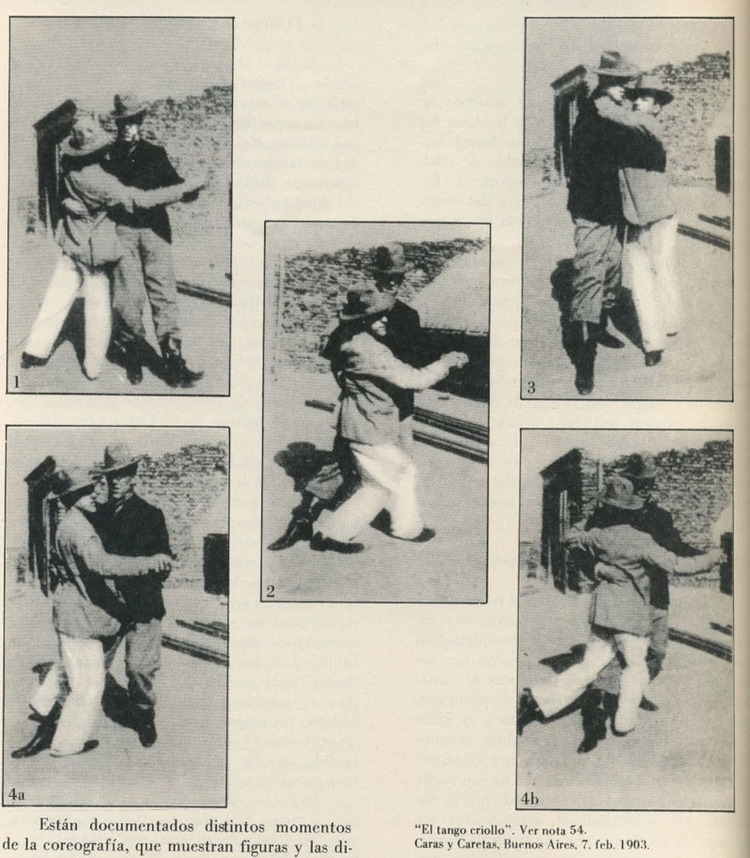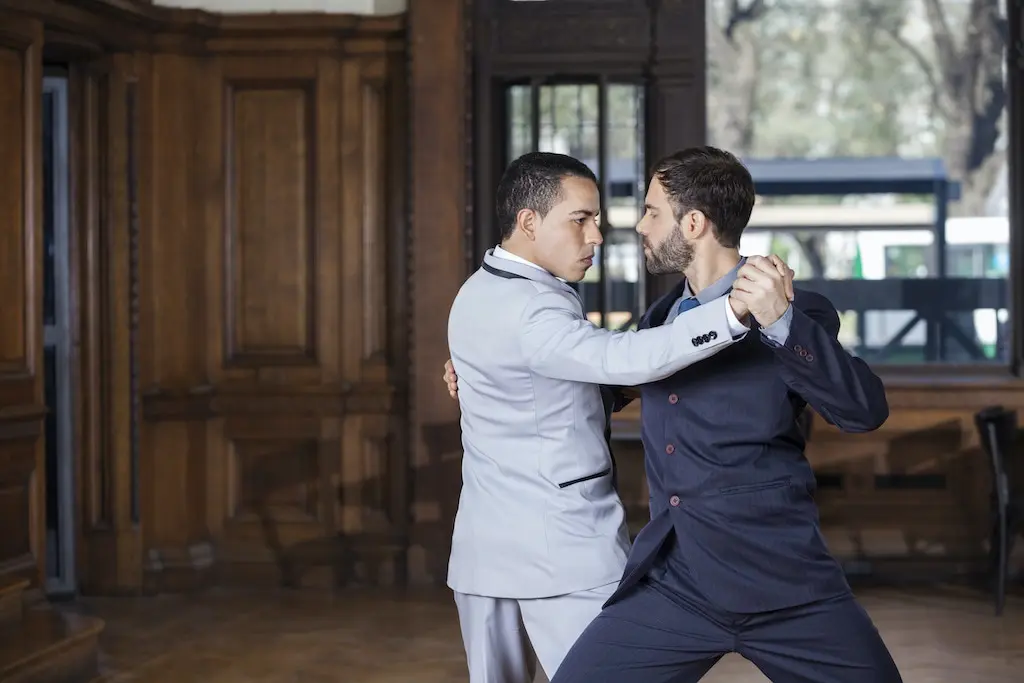Aside from Evita Peron herself, few things are as closely associated with Buenos Aires than tango.
While this sensual dance is now performed primarily by a male and female partner, tango has surprisingly homosexual roots. Read on to find out how tango transformed from a dance reserved for immigrants, former slaves, prostitutes and, yes, LGBTQ people to the dance en vogue seemingly overnight.
Vulgar to vogue
Tango began on the streets of Buenos Aires after the immigration boom of the mid-to-late 18th century. Specifically, it began in the city’s lower-class neighbourhoods newly populated by European immigrants, former slaves and those on the fringes of society—read: ‘Friends of Dorothy.’
These diverse neighbourhoods were brimming with working-class people excited by the prospects of a better, more stable life. Naturally, a unique cocktail of cultures, music and dance began to form, blending European minuets, polka and African styles. Early forms of tango were never officially documented, and only the most popular version of the ‘Argentine Tango’ survives today.
Argentina’s aristocratic class originally snubbed their nose at tango dancers, viewing it as ‘the immigrant’s dance.’ This did little to dissuade gay and lesbian dancers from partnering, however—with no social status anyway, and they were free to dance with whomever they wanted.
Despite Argentina’s elitist view of tango, it still managed to stowe away to New York and Paris in the early 19th century, where Tangomania instantly caught fire.
Persuaded by its international fanfare, the early 20th-century Argentine elites saw tango in a new light and were gleefully throwing shapes on the dance floor. Escándalo!
Seven men to every woman
During tango’s early days, Argentina was largely populated by male, working-class immigrants. In fact, one rough statistic claims there were seven men to every woman in the country, making marriage and companionship both competitive and a prize awarded only to a few.
Due to Argentina’s draught of X chromosomes, even our heterosexual brothers danced with one another. Same-sex dancing was simply a fun pass time, a chance to brush up on moves before a potential female suitor came along, and *fingers crossed* a chance to put a burly chest to a burly chest, moving strong hips to the alluring beat while fighting for dominance on the floor… Or again, just good fun.
The first published photo of tango was of two men
In 1903, the very first photo of tango was published in the magazine Caras y Caretas. The dancers were both men.

It was also popular in Uruguay
At the same time tango began in Buenos Aires, it was also gaining popularity in Montevideo, Uruguay. Like its Buenos Aires brother, Uruguay tango was popularized by the same men and women on the outer margins of society. In this case including gangsters, pimps and prostitutes. Although very similar in style to the Argentine tango, the Uruguayan tango has many nuances. And in fact, one of the most famous tango songs is La Cumparsita by the Uruguayan composer Gerardo Matos Rodríguez in 1919. While you may not recognize the name, we’re certain you know the tune. Listen here.
Moral panic

After World War II, moral panic hit the west like wildfire. Before this time, same-sex dancing was just good fun and said little, if anything, about someone’s sexual orientation.
But in the ‘40s and ‘50s, choosing a same-sex dance partner began to signify, um, tendencies. Faster than you can say, “Anita Bryant,” same-sex coupling was banned from milongas (tango clubs) and would only be found in the darkest corners of the scene.
Despite their early contribution to tango, LGBTQ people were snubbed of any and all credit. As is the case far too often, history was rewritten. Lesbianism was erased entirely from tango while gay coupling was chalked up as ‘just men practicing.’
While many countries, including Argentina, have since warmed to same-sex dance partners, it is still rare to find professional heterosexual same-sex coupling.
The rise of Queer Tango
In 2001, the world’s first official queer milonga opened in Hamburg, Germany. Not to be outshone, Argentina’s inaugural International Queer Tango Festival sashayed onto the scene that same year.
These two simultaneous events marked the beginning of the Queer Tango movement—a distinct style deliberately tossing gendered movements aside in favour of giving and receiving ‘impulses.’ And let’s be clear, we gays have always been excellent at giving and receiving impulses. 🤫
Want to taste the queer tango scene?
Today, Buenos Aires boasts multiple queer milongas where men and women can dance without prejudice. It’s also becoming less surprising to see queer tango in mainstream establishments.
On our Argentina: Buenos Aires to Mendoza tour, we’ll dip our two left feet into this sensual scene during a private milonga class (similar to tango) — led by a gay tango instructor, no less! After we’ve learnt the basics, we’ll head to one of the aforementioned milongas to either show off our moves or simply watch the classically handsome men in action.
Photo Credits
Header photos purchased on Shutterstock. All other photos courtesy of Wikipedia Commons.
Featured Posts
A short history on Argentina's progressive LGBT politics. Read More
Our fearless leader Rob offers his list of the most gay friendly countries in the world. Do you agree with his list? Read More
Insider tips to help you book your next gay Latin America vacation. Read More
Our hosts are joined by charismatic Chilean, Jorge Swett, to count down 10 experiences you can only have in South America’s wild west. Read More
As a spicy new addition to our roster of Flex tours, Colombia: Bogotá to Cartagena is overflowing with add-ons and excursions. Here's a breakdown of each optional activity and why you'll want to consider booking them. Read More
Enclosed with mountains, Santiago is Chile's valley capital as well as the first and final stop on Chile's gay cycling tour. If you're considering an extra day in the charming city, here are our tips to get the most pound for your Peso. Read More
